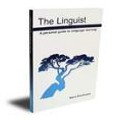English speaking Canada is a new nation that has undergone constant evolution. The first inhabitants of the area that is now Canada came from Asia over 10,000 years ago and eventually spread out over all of North and South America. In Canada, these people were nomadic in some areas and settled farmers and fishermen in other areas. In the millennia that followed, nobody knows for sure how many different people may have visited North America. Certainly the Vikings did about one thousand years ago, and fishermen from Western Europe starting coming to the area off the East Coast of Canada about six hundred years ago to fish for cod. In Eastern Canada, small permanent settlements of English and French speaking people from Europe eventually expanded across the North American continent, driven by the search for furs and by the desire to find farmland.
Canada became a colony of the British Empire in 1763. Soon after, as a result of the American Revolution, Canada received a major influx of Americans who wished to remain loyal to the British Crown: the United Empire Loyalists. This group determined how Canadians speak English today. The majority of immigrants to Canada for the first half of the 19th century were British Protestants who reinforced strong feelings of loyalty to the British Empire, opposition to the United States, and a sense of rivalry with the entrenched French speaking Catholic society of Quebec. The original constitution of Canada was known as the British North America Act.
Later immigration from other source countries caused attitudes to evolve. Most Canadians have gradually come to accept the increasingly varied makeup of Canada's evolving mainstream society. But still Canadians cherish common symbols, institutions and a way of life that are specific to Canada. They expect most immigrants to accept this Canadian way of life as a condition of making Canada their home.
The northern environment, the legacy of the aboriginal peoples, lingering Imperial British attachments, rivalry and accommodation with the French-Canadians, and the ever-changing influence of foreign-born people have all contributed to the evolution of English Canadian identity.
The image of the northern landscape remains a strong identification Canadians have with their country, even if most Canadians live in cities today. The landscape paintings of the early 20th century "Group of Seven" painters, and symbols like the Maple Leaf and the Beaver are examples of this identification with the rugged natural environment as distinctively Canadian. Ice hockey has been elevated to the rank of a national ritual. (Not all Canadians like hockey, but everyone recognizes the association of hockey with Canada.) It is appropriate that the hockey teams which created patriotic pride in Canada by winning gold for Canada at the 2002 Winter Olympic games were composed of players with very diverse ancestries. To most Canadians, these players are just Canadian hockey heroes. The question of the ancestral origin of players with names like Yzerman, Iginla, Sakic, Kariya, Gretzky, Jovanovski, Sunohara, or Wickenheiser is simply not important.
The cement that holds English speaking Canadians together is the English language itself. Even though Canadian culture is now truly an amalgamation of influences from all over the world, the English-Canadian language is uniform across the country and is less varied than the pronunciation found in Britain, the US or the Southern Hemisphere. Canadian English is a very useful version of English for non-native speakers. It is easily understood and not out of place anywhere in the world.

